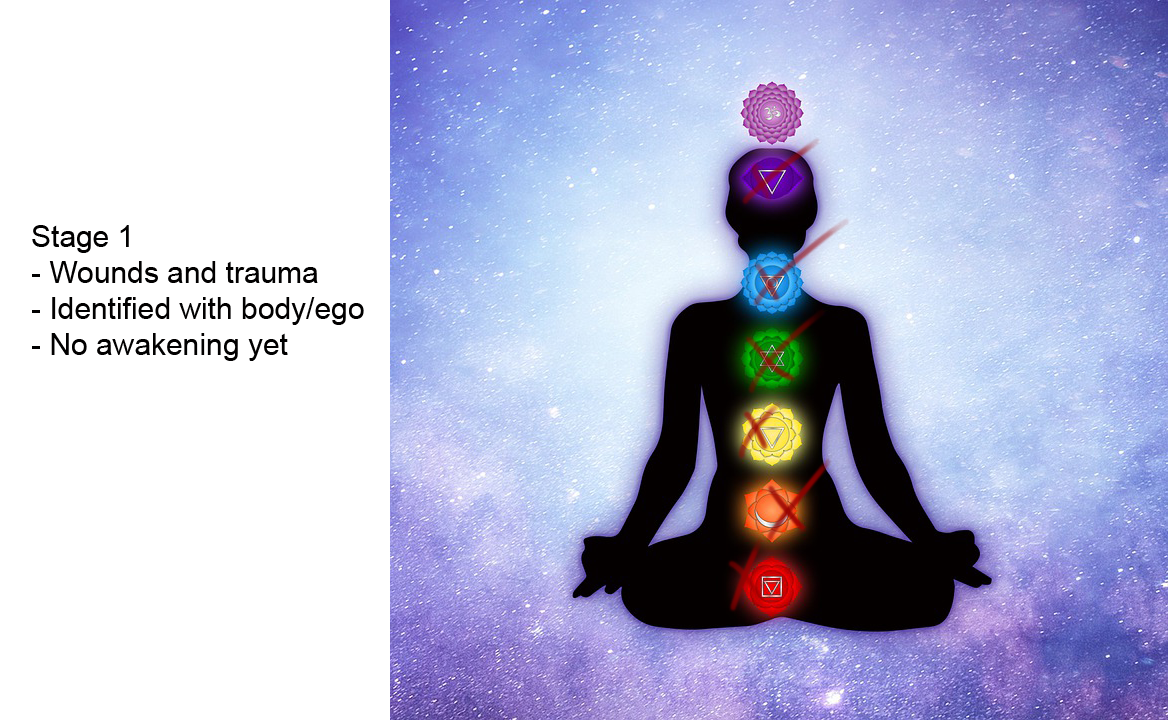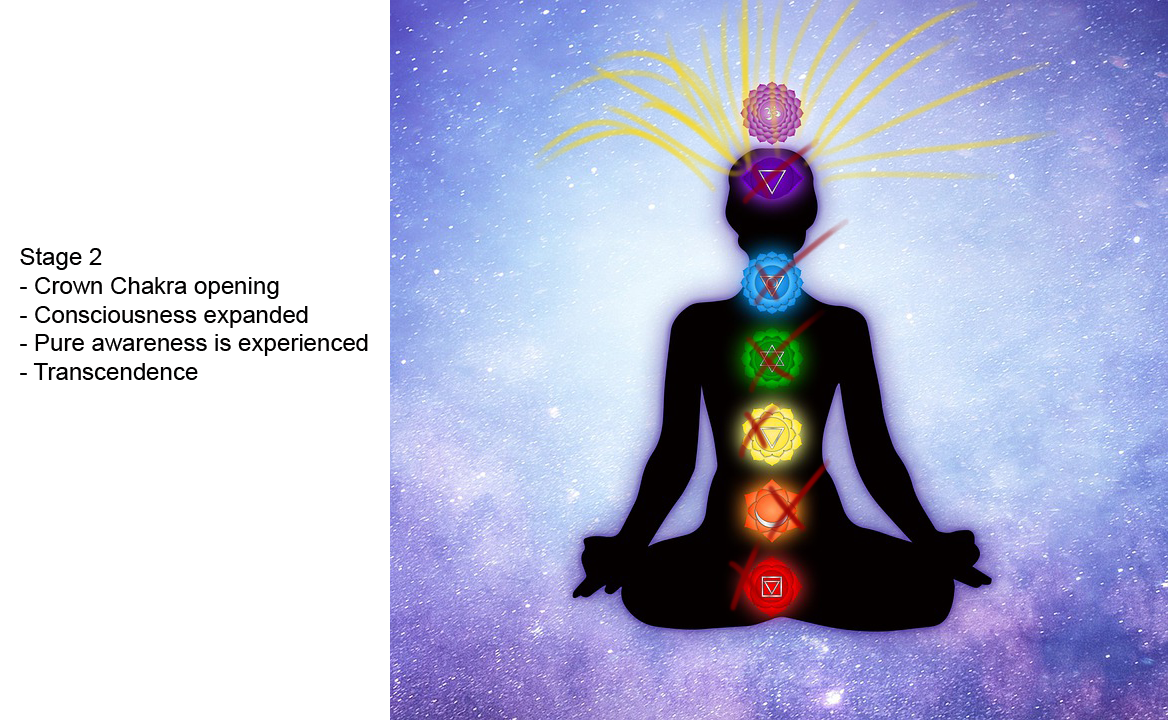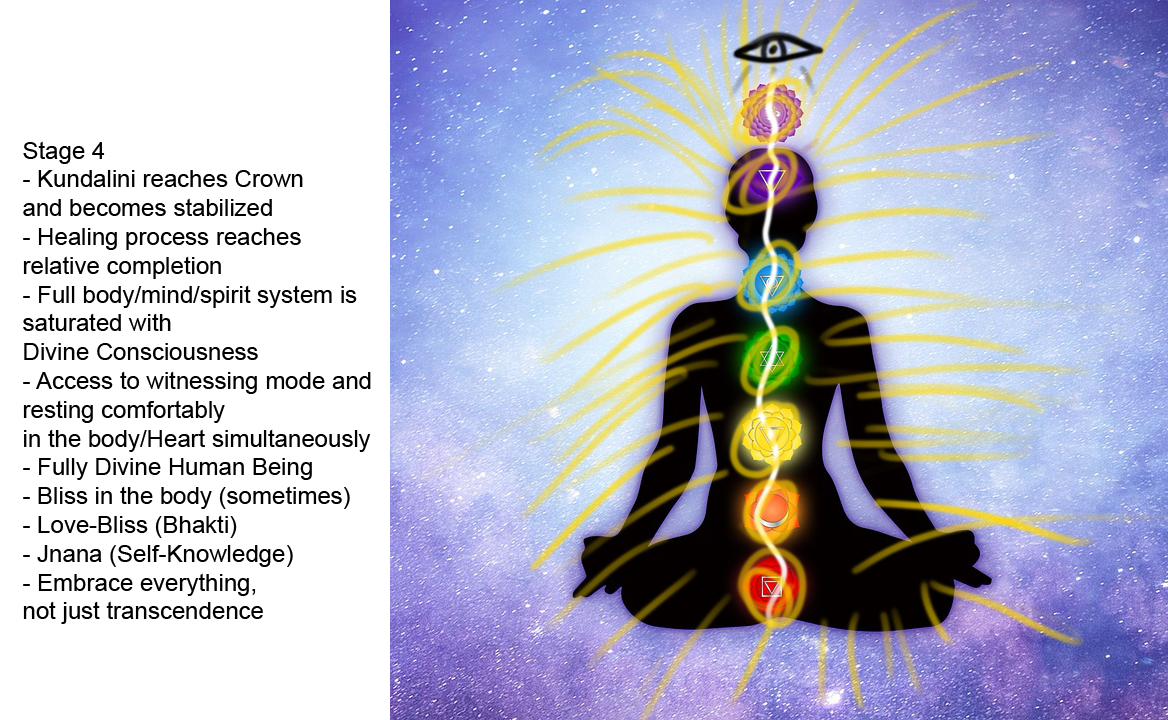Part 12: Denying Kundalini Awakening: Neo-Advaita, Non-Duality, Mooji, Maharshi
Today we're getting into the topic of Kundalini denial. Put simply there are some who deny the validity and the necessity of the Kundalini process for the attainment of self-realization and Spiritual Awakening.
Together, we’re going to look at why some dismiss Kundalini as merely an unnecessary phenomenon on the spiritual path.
I’ll be doing a bit of ranting and critiquing a well-known teacher by the name of Mooji, who, by the way, is not the only one who denies the Kundalini, but his work is a good example for me to use to make my points.
I’ll be referencing Sri Ramana Maharshi, one of the greatest saints of the modern era, and showing that he was not a denier of Kundalini Shakti in the way that many of his followers today might be.
I’ll be sharing about why people deny the Kundalini process - it’s got to do with the patriarchy and the suppression of the feminine.
It’s also got to do with people finding a way to bypass doing the actual healing work and instead just simply transcending the body, mind, and the world.
I’ve also got some insight about Advaita, Neo-Advaita and Non-Duality, as well as some fun diagrams to share with those watching on Youtube or reading on my blog. For those listening on the podcast, I’ll do my best to describe the diagrams.
And finally, I'll also be sharing a little bit about my own spiritual process and transformation. Admittedly I used to be part of the spiritual community that denied the necessity of Kundalini.
For this reason, I feel that my insight will be valuable to those on either side of the discussion, to get a better view of the full picture.
This part of the series is a bit nuanced and you might not know what or who I’m speaking about. It’s not a problem if you want to just skip it, as it’s not completely necessary to understand all of this in order to have a successful Kundalini process yourself.
If you haven’t already, check out the other parts of this series for some fundamental principles and practices to get through your own Kundalini awakening process safely and smoothly.
Right from the beginning, I want to let you know that if you happen to be a person in denial of the significance or even the existence of the Kundalini, that's okay. I myself used to deny it fervently.
I had an initial awakening on the level of the Crown chakra, what some might refer to as a non-dual Awakening, which I will explain more about with some diagrams soon.
When this happened, I was completely certain that there was nothing left for me to awaken to, experience, or embody on my spiritual journey. That's how it felt. It felt complete.
Maybe you’re at a similar point on your journey and you happen to be in denial of the Kundalini. I just want to tell you quite clearly that if and when she decides to move through you, there is a very high likelihood that you will be irresistibly drawn to get on your knees and weep tears of devotion and love for the goddess.
I denied her and still, her compassion and love for me were unconditional. And now I sit here before you today as a devotee of the Divine Mother Kundalini Shakti.
So over a thousand years ago in India, there was a Yogi by the name of Adi Shankaracharya. He is one of the earliest figures to bring forth a spiritual system called Advaita. Advaita translates to ‘one without a second’. It implies not-two, non-duality, and oneness.
Within the context of this series, we can think of Shiva and Shakti as being in a state of Advaita, a state of not-twoness. As we know, Shakti rises from the base of the spine, unites with Shiva at the Crown, and Self-Realization takes place.
The records show that Adi Shankaracharya chanted mantras of devotion to both Shiva and Shakti, the God and the Goddess. The masculine and the feminine.
His system of Advaita was complete. It did not deny the goddess, Kundalini Shakti.
But today, a new offshoot of Advaita has emerged within the past few decades, known as Neo-Advaita. Neo means new. It’s generally synonymous with the spiritual approach and community by the name of Non-Duality.
Within the Neo-Advaita or Non-Duality scene, there are many teachers and aspirants claiming to have attained Self-Realization without undergoing the energetic Kundalini process.
Some within this community deny the significance of Kundalini itself. They do in fact experience some degree of spiritual awakening and transformation, which feels complete to them at the time.
You may have heard them speaking of ideas such as, ‘there is only awareness’, ‘there is no ego’, ‘there is no me’, ‘everything is consciousness’, ‘the world is an illusion’, ‘suffering is just identification with the false sense of self’, and so on.
Now, these ideas do have some validity, but they are often misunderstood and used to bypass doing the actual spiritual work of healing and purification, which is facilitated by awakened Kundalini.
Those that share these ideas about how there is only awareness and things like that achieve an awakening of the Crown chakra, but it is not the full awakening process.
Let me use some diagrams to explain.
These diagrams are very basic, and imperfect, and only show one type of awakening process, which is the most common kind amongst those on the path of Neo-Advaita or Non-Duality.
In stage 1, what we have here is the average person that hasn’t yet experienced any significant spiritual awakening. We can see the chakras contain wounds and trauma, signified by the red X’s.
They’re identified with the body and the ego-mind. They believe themselves to be this body and their ego.
Here in stage 2, we see that there has been an opening at the Crown chakra in which Divine Light, signified by the yellow lines, has begun to enter the head and surround the outside of the head.
One’s consciousness has expanded beyond their body and mind, and pure non-dual awareness is experienced as a result. Within that non-dual awareness, one can begin to rest in transcendence, leaving the body ego-mind behind.
This can happen spontaneously or as a result of practicing mind-based spiritual processes such as Self-Inquiry, mindfulness meditation, psychedelic drug use, or philosophical contemplation.
Here in stage 2.5, there is an eye above the Crown chakra, representing the new ability to transcend the body and ego-mind and access a state of consciousness in which one can witness the phenomena of the world from a place of detachment, some refer to this place as the Self with a capital S.
From this place of detached witnessing, one feels a sense of peace and stillness as they are no longer identified with the body, ego-mind, or the pain and trauma within the chakras. Note that the wounds still remain within the body. Despite the wounds remaining, one can feel a sense of completion and finality of their spiritual process. It feels like there can’t be anything left to unfold.
From here, it’s easy to bypass the need to address emotional issues, trauma, and other aspects of being a human. It’s also nearly impossible to relate on a truly deep emotionally intimate level with oneself or another. And for this reason, the process is incomplete.
This stage, 2.5, is the end goal of Neo-Advaita or Non-Duality.
Stage 3 is generally beyond the scope of Neo-Advaita or Non-Duality. It involves the rising of the Kundalini Shakti from the base of the spine, signified by the white line.
If one doesn’t get stuck in stage 2.5, there is a good likelihood that Kundalini can rise.
Sri Ramana Maharshi was a spiritual master who is still celebrated greatly by many today. He did not speak much about Kundalini Shakti. Instead, he spoke mainly about the mind-based practice of Self-Inquiry, which, if performed correctly and ardently, would bring about a Crown level awakening as we are seeing in these diagrams.
Many who follow Sri Ramana take this to mean that Kundalini is not necessary. They have used him as a figurehead for Non-Duality and Neo-Advaita, denying Kundalini altogether.
However, from this stage 3, according to Sri Ramana, the Kundalini Shakti would rise on its own. Here are his words about it:
“In the jnana marga, when by Self-enquiry the mind is merged in the Self, the Self, its Sakti or Kundalini rises automatically.”
Now Sri Ramana was very good with his words. If Kundalini Shakti did not exist or was not relevant to the attainment of Self-Realization, he would have stated so. Instead, he did not deny it. He acknowledged its existence.
So in stage 3 here, the Kundalini rises and begins the purification process of the entire system, healing the wounds within the chakras and whatnot. One might be able to access the witnessing stage once Kundalini has begun her process, but during intense emotional times, the witnessing mode may not be available.
To undergo this healing process is when the real spiritual work begins. It requires a willingness to feel everything, deny nothing, to be vulnerable and humble, to surrender, and to love yourself unconditionally.
And finally, we have stage 4 in which Kundalini completes the purification process of the system and stabilizes at the Crown chakra. This is when Shakti and Shiva are united, as one, in a state of true non-duality, Advaita.
The healing process reaches relative completion. I use the word relative here because one doesn’t need to have every single ounce of conditioning cleared in order to be established in a state of Self-Realization. There are certain quirks and things that will remain as a result of simply being a human.
As you can see, there is Divine consciousness radiating around the entire body now, and all chakras are clear and glowing. The full system is experiencing the awakened state, not just the crown chakra as in the earlier stages.
In this stage, we have access to the witnessing mode, the Self, as well as the ability to rest comfortably within the body where we can experience all the joys of being a human and having an emotional and physical experience of life.
We are fully Divine Human Beings. Sometimes bliss is experienced in the body, not as an emotion, but as a biological function, like being on a drug. This is not common in the Neo-Advaita or Non-Dual version of awakening. This bliss is synonymous with the felt experience of love within the body and the heart. It has been called Love-Bliss and it does not have a mental component to it. It is simply Bhakti, devotion.
At the same time, there is great Jnana, knowledge of the Self. There’s a balance between Jnana and Bhakti, knowledge and devotion.
From here, everything is embraced, all emotions, the ego, the body, and the uncomfortable parts of life. Nothing is transcended or avoided as in the earlier stages. All is welcomed unconditionally in a true state of oneness.
So this process that I’ve outlined here with these diagrams is more or less how things unfolded for me. I practiced Self-Inquiry, experienced a big awakening of my Crown chakra, and found that I was able to transcend my body, my ego, and the world. It felt complete.
But much was lacking. I was disconnected from the world and the other people in it. I couldn’t relate on a deep level. I was spiritually bypassing all of my pain. I was afraid to return back into the body and address my wounds.
But then, as Sri Ramana describes, the Kundalini began to rise automatically. As it rose, I was drawn back into the body and entered into a state of purification that was very exciting, but very difficult.
So why do some deny the necessity of the Kundalini rising process?
Here’s what Mooji had to say on the matter. He’s one of the most popular teachers of Neo-Advaita and Non-Duality. He’s just one example of many teachers that don’t appreciate the significance of Kundalini because they haven’t experienced it themselves.
A woman, who had undergone a genuine Kundalini awakening, asked Mooji “Have you experienced that?” referring to the Kundalini. Mooji responded dismissively, “Oh my dear. That is child’s play. There are many yogis, probably even here, who have been doing these things or having these experiences, for years. And now they are searching for freedom.”
This outright denial of the Kundalini process is why so many end up stuck with merely a Crown-level awakening.
The irony is that Mooji displays Sri Ramana’s photo next to him as he teaches in his ashram but Sri Ramana himself did not deny the Kundalini, despite what many might like to think.
So why this denial? Well, I’ve touched on a few points but let me elaborate.
Firstly, it’s not that hard to attain a Crown level awakening and enter into a witnessing state and transcend the body, mind, and world, with all its pain and suffering. One can easily be guided to this kind of awakening in a short amount of time with certain practices and approaches.
Once this happens, it’s easy to just relax into a state of detachment and dismiss all the phenomena of the world. This is where the idea of patriarchy and the suppression of the feminine comes in.
Yes, those who deny Kundalini Shakti are directly denying the most feminine force in all of existence. But they’re also denying the feminine on a more subtle level too. They’re in denial of their emotions and feelings. They’re in denial of the feminine qualities of love, bliss, and surrender.
To undergo the full Kundalini process, one needs to be willing to face their emotional hangups, trauma, fears, and work to heal. This is not easy. For the same reason that men in general don’t like to open up about their feelings, the Kundalini Shakti process is denied. It requires vulnerability and not avoidance or transcendence. It requires us to embrace our femininity and find energetic balance within ourselves.
Because it’s rather easy to have a Crown level, non-duality style awakening, it’s also easy to become a teacher and guide others to this point too. This makes it appealing for many who are seeking some sort of recognition on the spiritual front. What better claim can one make than that they’re enlightened and have no work left to do?
Remember, Neo-Advaita is Advaita with a prefix. It’s a new spin on an old system. Why update something that has worked in the past? In my opinion, Neo-Advaita has arisen to justify spiritually bypassing the actual healing work. With Neo-Advaita and Non-Duality, we get to be awakened without diving deep into addressing our wounds, learning to love ourselves, taking care of our bodies, and relating with other human beings as human beings ourselves.
Like I’ve said, I understand. I fell victim to denial of the Kundalini process too. I was stuck in a state of witnessing for a couple of years straight. It felt free because I was detached from my body and the world, which up until then, were very painful for me. It was nice to get some space.
But in that detached state, I couldn’t relate to anyone. Everything was just empty and void. It was not a comfortable place to be in the long run. I am so grateful that despite my own denial of her, Kundalini Shakti, the Divine Mother, still showed me her love.
I wish the same for you all.






